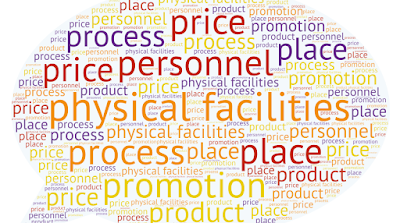Marketing Mix: Concept and Elements of Marketing Mix
Concept of Marketing Mix
Every business enterprise has to determine its marketing mix for the satisfaction of needs of the customers. Marketing mix represents a blending of decisions in four areas- product, price, promotion, and physical distribution. These elements are inter-related because decisions in one area usually affect actions in the others.The basic purpose of determining the marketing mix is to satisfy the needs and wants of the customers in the most effective and economical manner. As the needs of the customers and the environmental factors change, the marketing mix also changes.
Thus, the marketing mix is a dynamic concept. It concentrates on how to satisfy the needs of the customers. If the needs of the customers change, the marketing mix will also be changed. Thus, marketing mix basically concentrates on the customers.
The customer is the pivot around which all the organisational activities revolve.
Elements of Marketing Mix
There are 4 elements of Marketing mix which are as follows-
- Product
- Price
- Promotion
- Place or Physical Distribution
In each of the elements, decisions are to be taken as regards certain sub-elements. For instance, in the product area, decisions are taken as regards product range and quality, branding, packaging and labelling, after-sale services etc. These elements constitute the product mix of the firm. In the same manner, each firm has to determine its price mix, promotion mix and place mix.
As a matter of fact, the marketing mix is a mix of product mix, price mix, promotion mix and place mix.
These elements of marketing mix are discussed below:
- Product: It involves planning, developing and producing the right type of products and services to be offered by the firm to the customers. It deals with the product range, durability, branding, packaging, colour and other features.
- Price: The price of the products must cover its cost of production and distribution and also a reasonable margin of profit. Pricing also involves establishing policies regarding credit and discount. The variables that vitally influence pricing are: demand for the product in question, its cost, actual and potential competition, and government regulation, etc.
- Place or Physical Distribution: It is concerned with the choice of middlemen and the place where the product should be displayed and made available to the customers. It also involves decisions regarding storage and transportation. The important channels used for physical distribution of goods include wholesalers and retailers. The aim of distribution activities is to make products available to the customers at the right time and at the right place.
- Promotion: It deals with informing the customers about the firm's product and persuading them to purchase the same. It involves personal selling, advertising, publicity and sales promotion. Taken together, these elements constitute the promotion mix of the firm.
In addition to these 4Ps (Product, Price, Promotion, and Place), three more Ps for services marketing include people, physical evidence, and process.
- People: Service people are an important consideration because they are the one who provide most services. A service firm can be only as good as its people. If the people don't meet customers' expectations, then neither did the service.
- Process: Process is of critical importance to consumers in high-contact services. Dinners in a restaurant can be significantly affected by the manner in which staff serves them and the amount of waiting time involved in the service production process.
- Physical Evidence: It reduces the risk perception by customers by offering tangible evidence of the promised service delivery. The evidence of service quality can take a number of forms, For Example: A brochure giving pictorial evidence of infrastructure and physical facilities of a management school, or a holiday brochure giving evidence of hotels and resorts.



Comments
Post a Comment